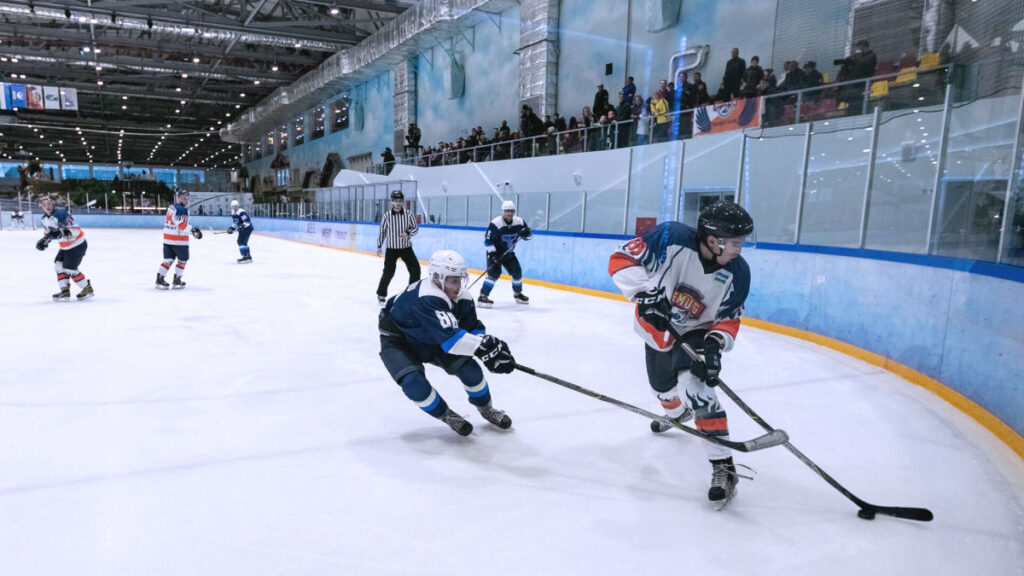How cold are ice staking rinks? Weather and climate play crucial roles in the realm of sports, often acting as pivotal factors that can significantly enhance performance or, conversely, contribute to a less than ideal experience. Regardless of our physical fitness and preparation, it’s vital to acknowledge that the human body has its limits when it comes to tolerating extreme conditions.
One sport that demands special attention to weather and climate is ice skating. A question that naturally arises is: How cold are indoor ice rinks, and is it possible for anyone to endure the chilly atmosphere they present? Moreover, are there any strategies or measures in place to help participants mitigate the cold?
This article aims to delve into these queries by providing precise temperature measurements and identifying the optimal temperature range for ice skating. Additionally, we’ll explore the conditions that render these ice rinks either suitable or potentially hazardous for skaters.
An indoor ice skating rink is comprised of several key components, including the ice floor itself, the roof overhead, and the walls or barriers that enclose the space. It stands to reason that the surface of the ice, being in direct contact with the chilling mechanisms, would be colder than the air above or the surrounding areas of the rink. But just how cold does it get, and what does this mean for ice skaters?
To gain a deeper understanding, let’s examine the specific temperature settings maintained within indoor ice rinks. These controlled environments are designed to keep the ice in prime condition for skating, while also considering the comfort and safety of the skaters. We’ll look at the technology and methods used to regulate these temperatures, as well as how skaters can prepare for and adapt to the cold climate of an indoor rink.
Moreover, this article will review the potential risks and benefits of ice skating in such cold conditions. Understanding the balance between maintaining the perfect ice surface and ensuring skaters’ comfort and safety is key to enjoying all that ice skating has to offer. Whether you’re a seasoned ice skater or someone considering stepping onto the ice for the first time, knowing what to expect in terms of temperature can greatly enhance your experience.
1. Air Temperature

For the record, it’s interesting to note that indoor ice rinks maintain an average air temperature of 50 to 55°F to create an optimal environment for ice maintenance and skating comfort. The air inside these specialized venues can dip as low as 35°F, especially during peak operational hours or in colder climates, adding an extra chill to the atmosphere.
However, this brisk environment is not without its challenges. When the rink’s temperature falls slightly too low, even below the average, the freezing conditions can pose significant difficulties for skaters. The cold can affect muscle flexibility and performance, and in extreme cases, lead to increased risks of injury.
But is there a way to mitigate these cold-induced challenges? Absolutely! Skaters have developed a practical and effective strategy to counter the cold. By actively moving around the rink, engaging in dynamic stretches, and practicing their routines, they generate body heat. This increase in their bodies’ temperature not only helps in staying warm but also enhances muscle flexibility and overall performance on the ice. This proactive approach allows skaters to adapt to the cold conditions of the rink, demonstrating the resilience and adaptability inherent in the sport.
2. Ice Temperature
As we approach the icy ground, the air temperature decreases significantly. Scientifically speaking, the surface of the ice should remain well below the freezing point to maintain its solid state. If the ice were to warm up, it could lead to potential safety hazards and negatively impact performance due to melting. The presence of water on the ice surface increases the risk of slips and falls, making it crucial for the ice to stay sufficiently cold.
But exactly how cold should it be? To ensure optimal conditions for ice stability and skater safety, the temperature of the floor in a skating rink is meticulously regulated. It is typically maintained at a chilly range of 17°F to 29°F, which is below the freezing point of water. This specific temperature range is crucial for creating a hard and smooth ice surface, ideal for various ice activities. Maintaining this temperature requires precise control of the rink’s cooling systems to adapt to both external weather conditions and the heat generated by skaters and spectators.
3. Why are ice rinks so cold
Perhaps, the ice skating rink’s temperatures seem overwhelmingly cold, especially for individuals who find it hard to tolerate lower temperatures. However, there are several compelling reasons why ice skating rinks must maintain these cooler temperatures.
Firstly, the surface temperature of the ice plays a critical role in ensuring the ice is viable for skating. The ice needs to be kept at a consistently cold temperature to prevent melting and ensure a smooth skating surface. Attempting to keep the air warmer for the comfort of spectators would compromise the quality of the ice, making it unsafe or unsuitable for skating activities.
Moreover, ice skating rinks are engineered with multiple layers beneath the surface to efficiently manage and maintain the cold temperatures required. These layers include an advanced insulation system designed to minimize heat transfer, a layer of heated concrete sand that incorporates metal pipes for coolant circulation, a solid gravel base that supports the structure and aids in temperature regulation, and a drainage system to deal with any potential melting.
Additionally, to keep the entire rink chilled and ensure the ice remains in optimal condition for skating, these facilities employ sophisticated refrigeration systems similar to those used in commercial refrigerators. These systems are crucial for generating and maintaining the cold environment necessary for the ice layer to stay frozen and smooth, providing a safe and enjoyable skating experience.
Understanding the complex infrastructure and temperature requirements of ice skating rinks highlights the careful balance between providing a pleasant environment for visitors and ensuring the safety and quality of the ice for skaters.
HOW DOES ICE RINK TEMPERATURE AFFECT SKATING
We mentioned that the ice skating rink’s temperature can affect the skater’s performance and other execution aspects. Here are some of the pertinent factors.

1. Hard vs soft ice
Just remember one simple rule: the state of the ice tells you its temperature. Hard ice, which usually hangs out between 17°F and 24°F, is a hockey player’s dream – it’s where they glide with ease, thanks to less resistance. Meanwhile, the figure skaters are all about that soft ice life, found at a cozy 25 to 29 degrees. Why? Because soft ice offers the perfect grip for those breathtaking jumps and ensures landings are kinder to their bodies.
2. Indoor vs outdoor
How cold are ice staking rinks? As I mentioned, the temperature of ice rinks can change a lot because of the weather outside, condensation, how well they’re insulated, and other stuff. Sometimes, even though the ice is hard, it might not feel like it if it’s really humid or hot outside, making the surface feel kind of soft.
So, we should definitely get to know the best temperatures and other weather conditions for ice skating rinks. This way, we can pick the best places to practice. Generally, most folks are good with temperatures between 20 to 28°F.
3. Choice of hollow
Did you know mastering the ice means mastering your gear? The secret to adapting to the skating rink’s chill is all in choosing the right hollow or skate shoe groove depth. Picture this: skating on a rink that’s between 17°F to 23°F? Opt for a 7/16″ hollow and glide like a pro. Facing a slightly warmer rink at 23°F to 26°F? A standard profile has got you covered. And for those really pushing the thermometer at 27°F to 29°F, it’s time to switch to 9/16″ or 5/8″ hollows. Gear up right, and the ice is yours to conquer!
CONCLUSION
How cold are ice staking rinks? Our skills play a big part in how awesome we do in our favorite sports. Training is key, but don’t forget, other stuff like the weather can impact how slick we are on the ice. Ever wondered just how chilly indoor ice rinks get? The ice needs to be cool enough to stay frozen solid. And yeah, even if it’s a bit nippy for some, the air usually hangs out around 50°F.
